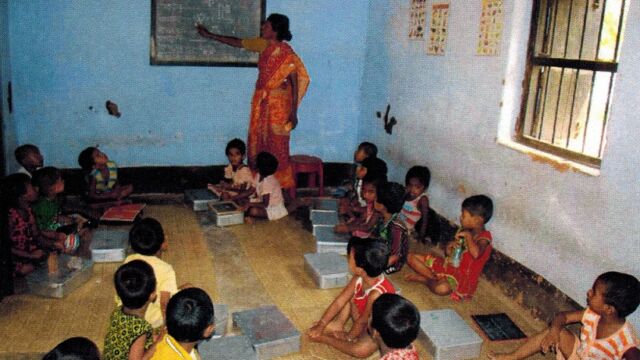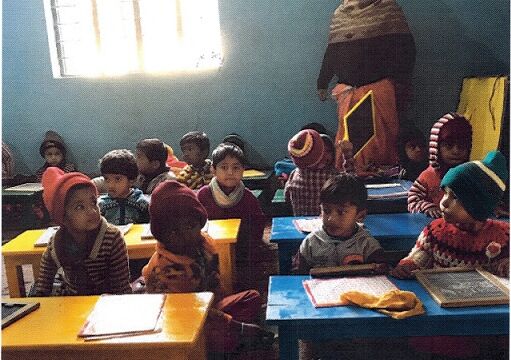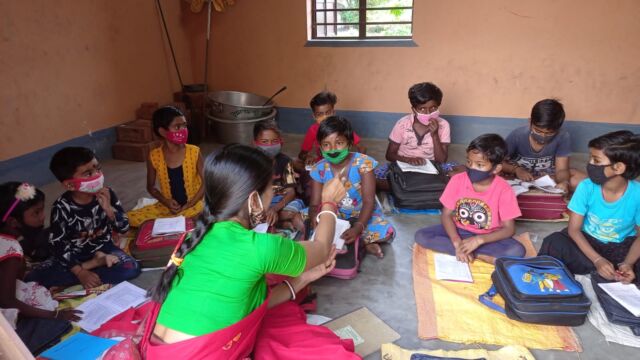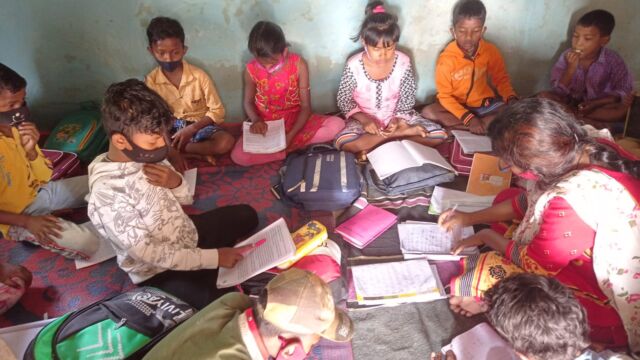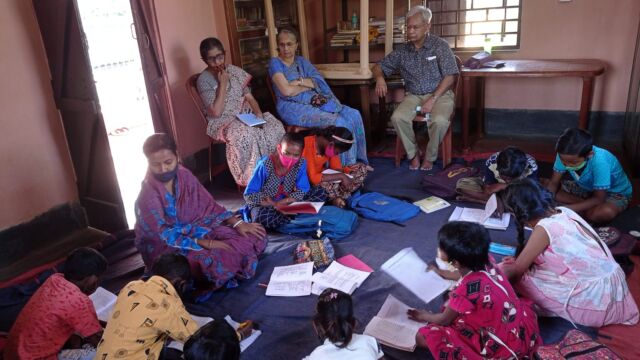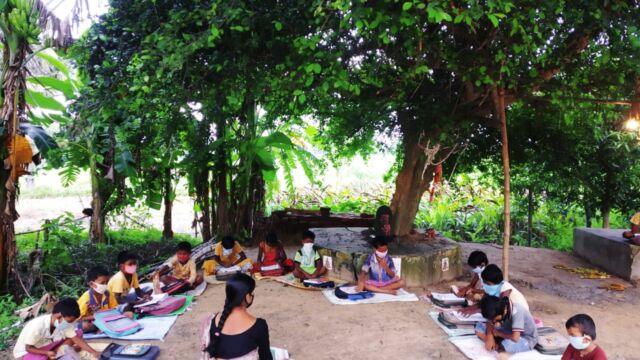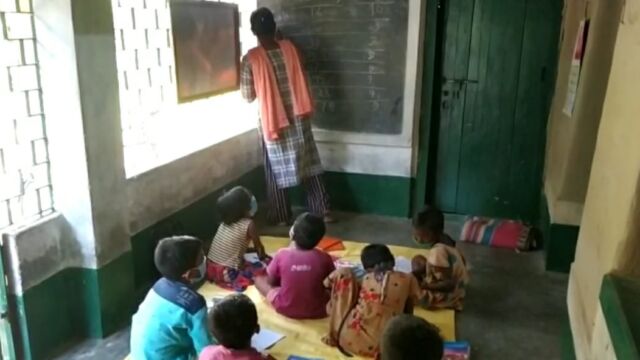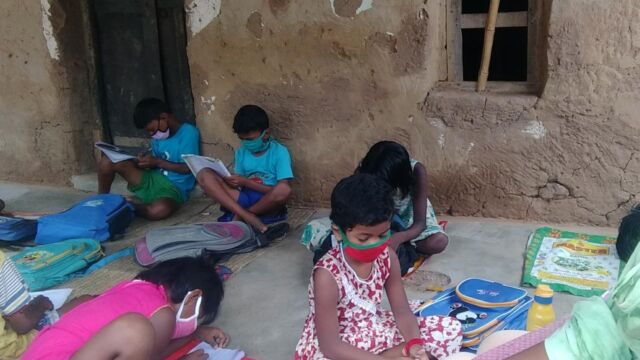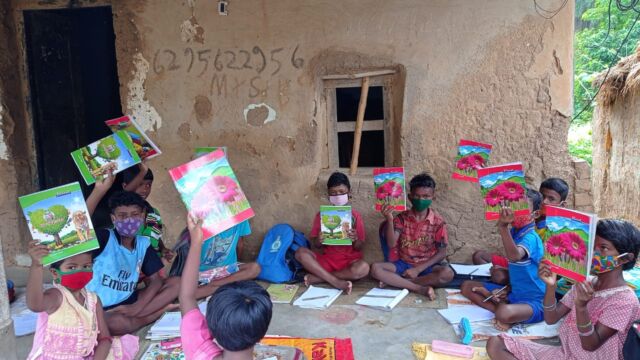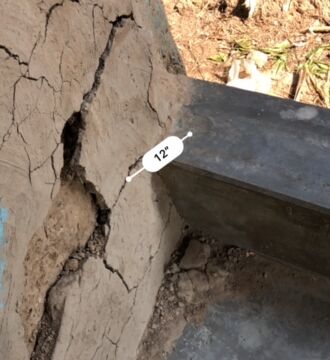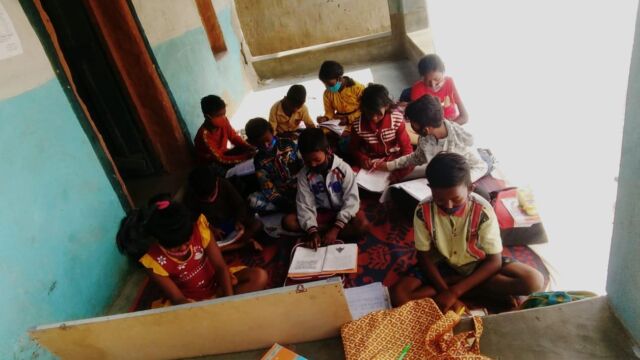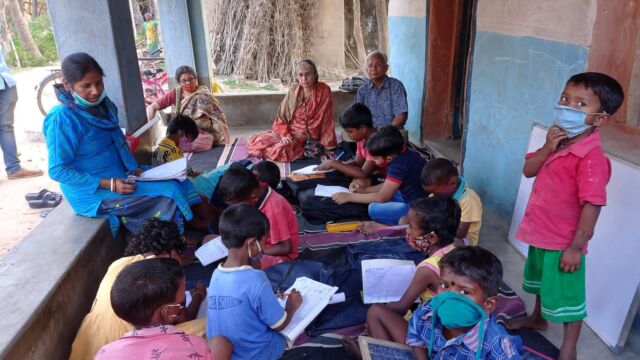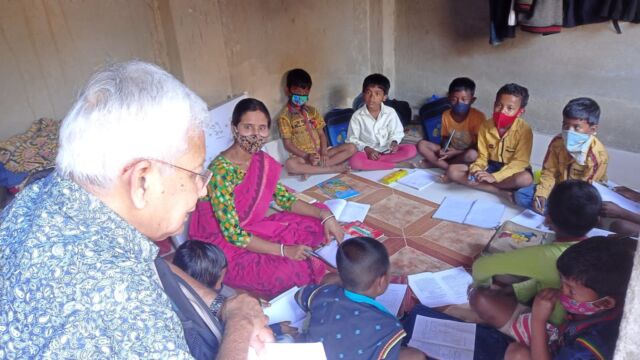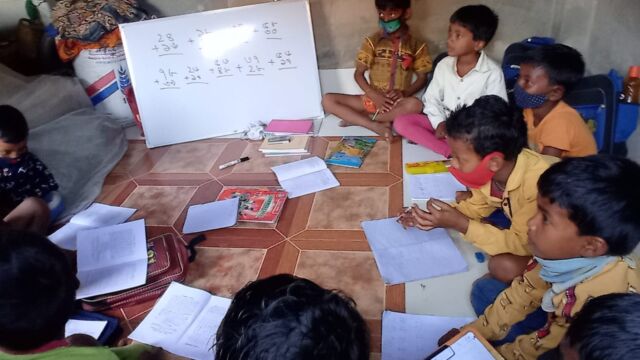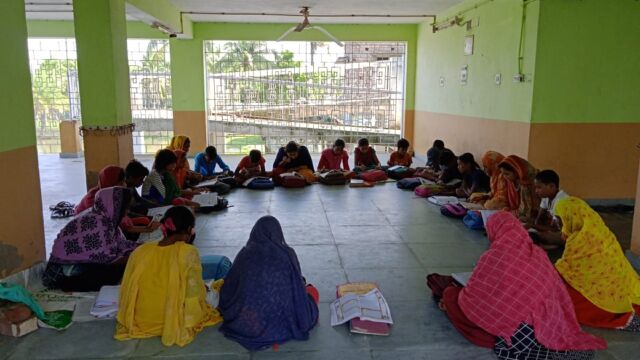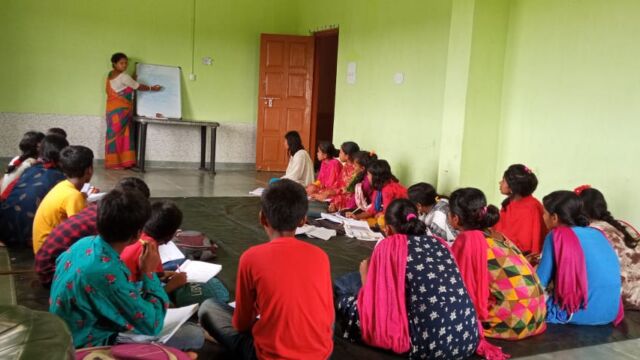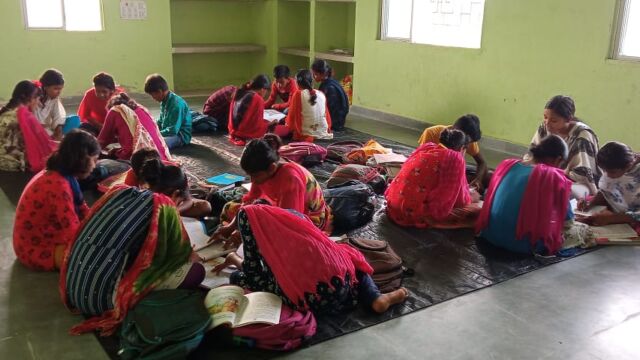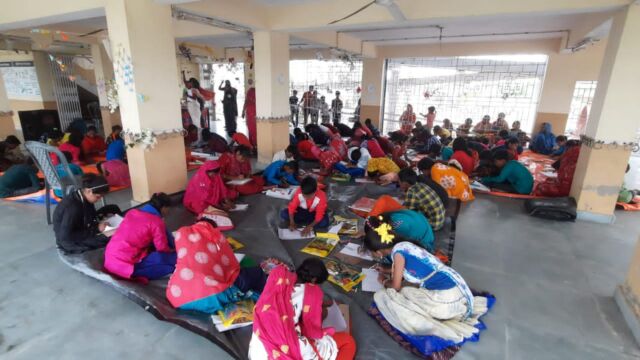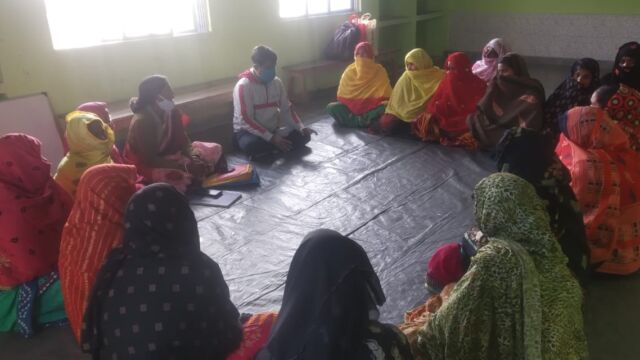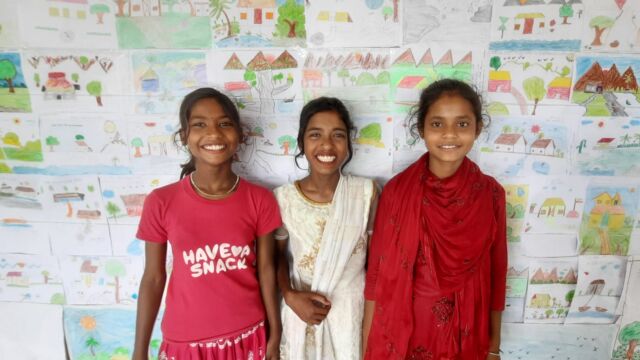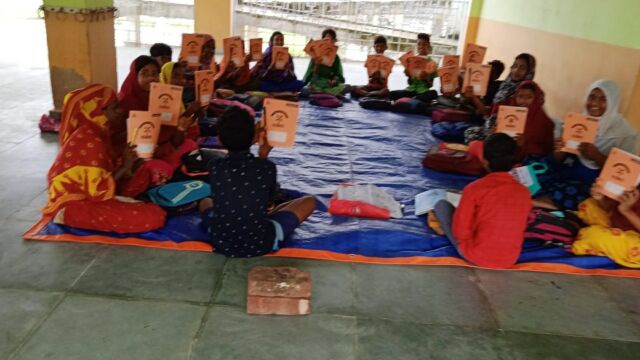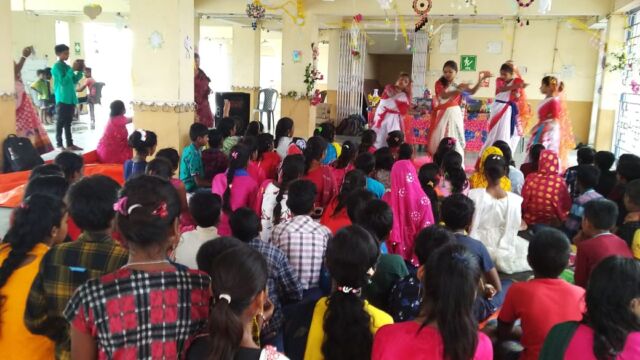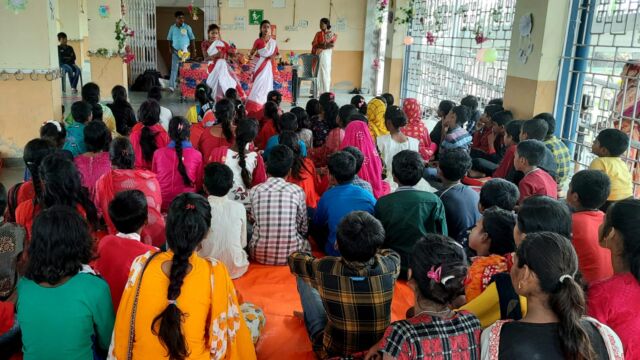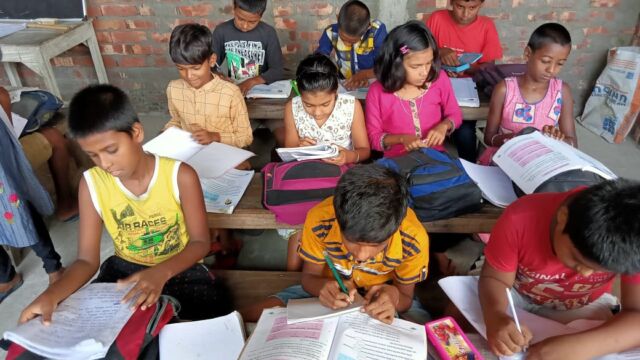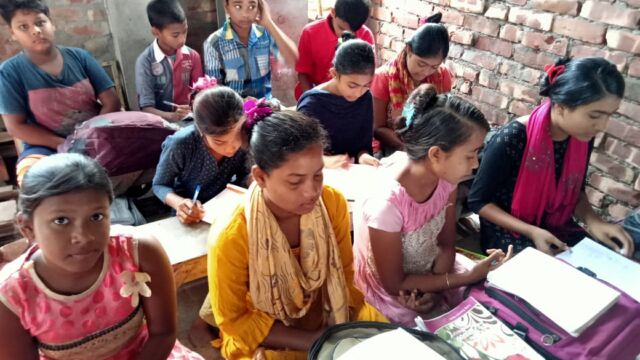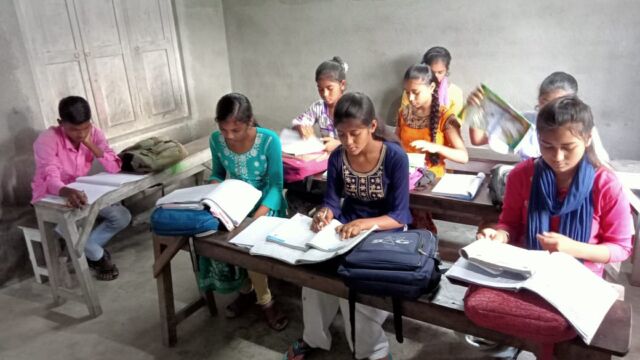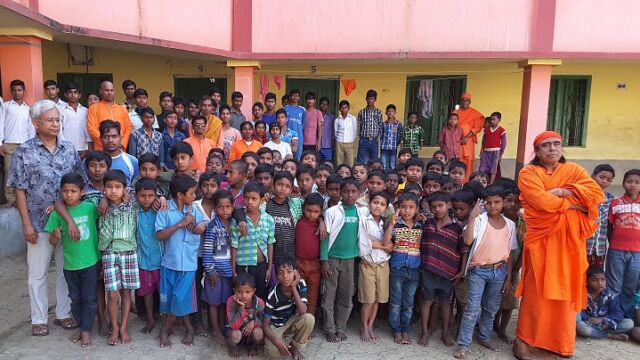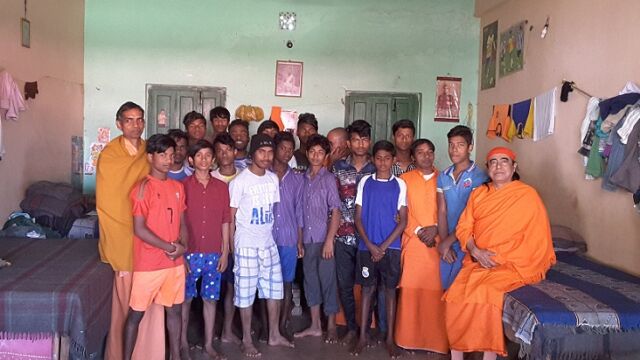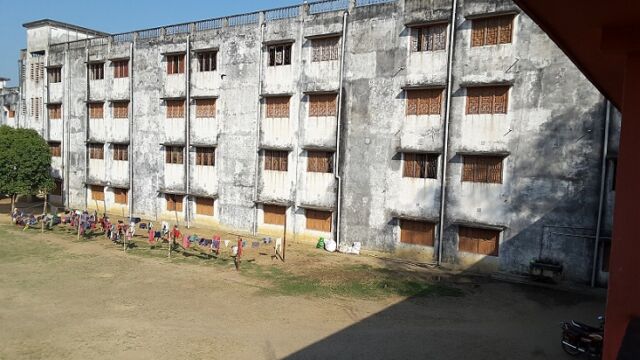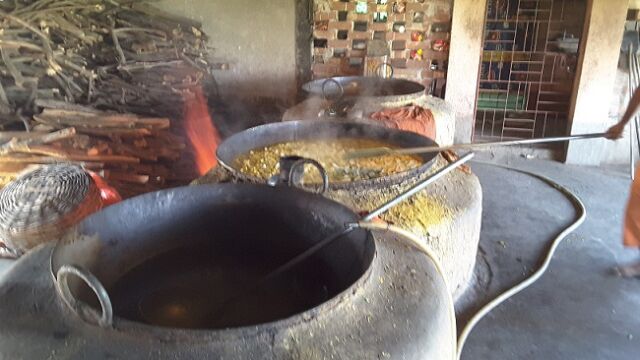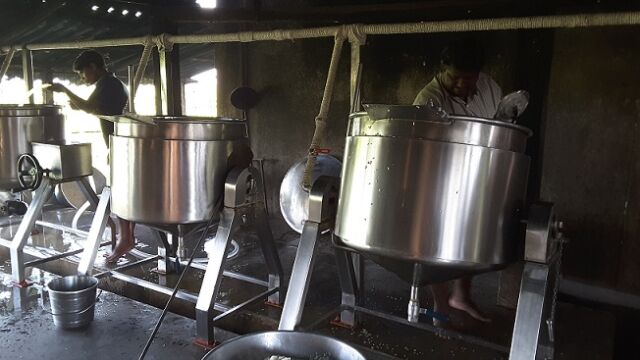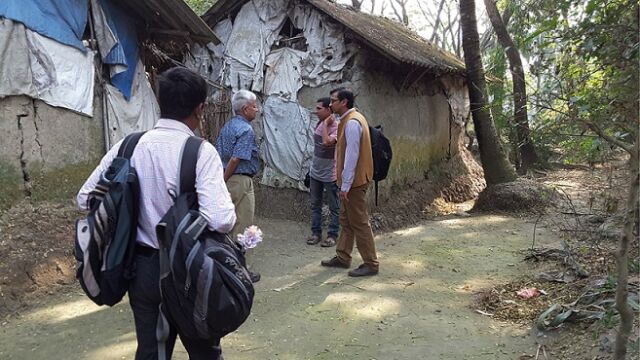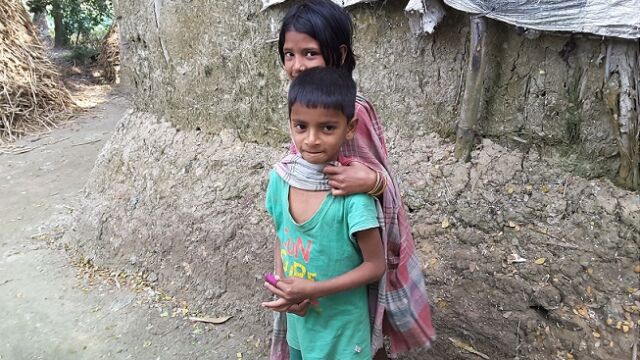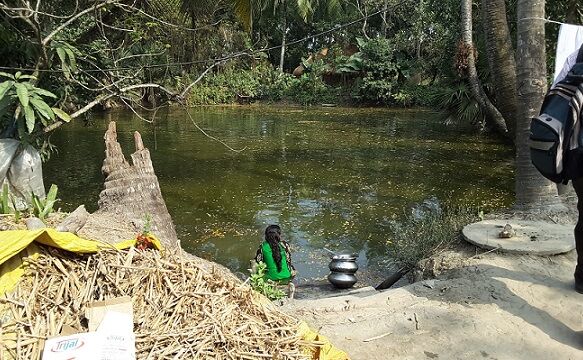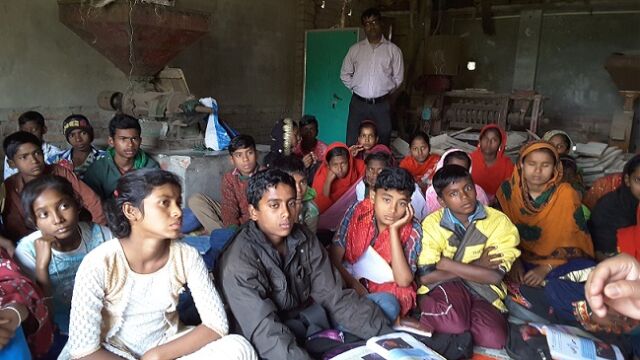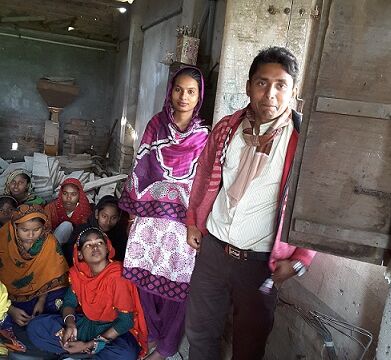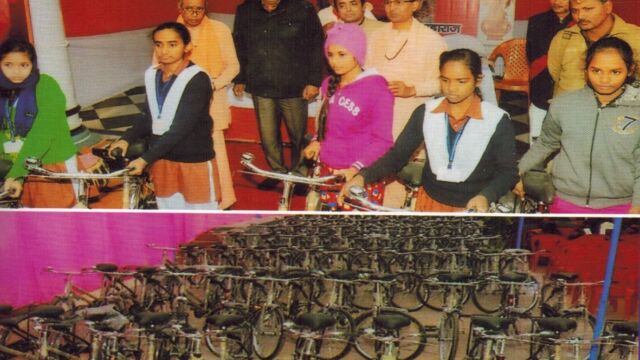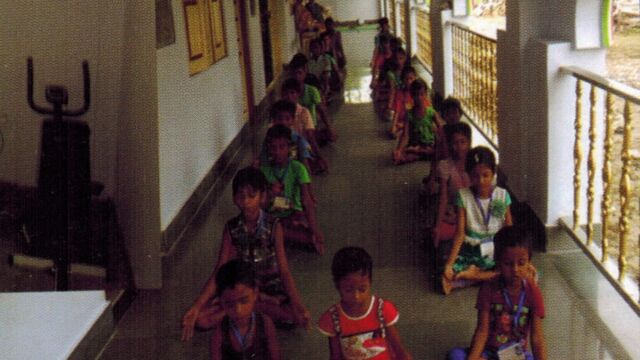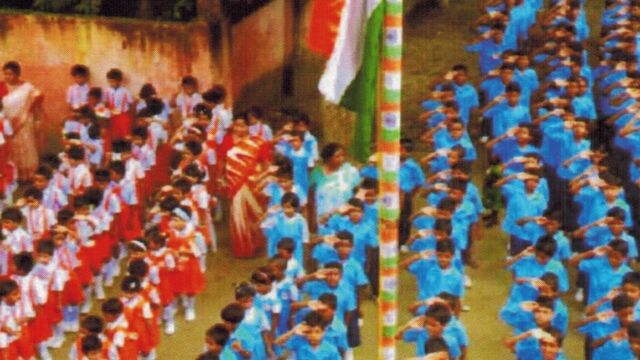-
 Atghara, 24-Pargana (S)Click Here
Atghara, 24-Pargana (S)Click Here -
 Bolpur, BirbhumClick Here
Bolpur, BirbhumClick Here -
 Mousuni, 24-Parganas (S)Click Here
Mousuni, 24-Parganas (S)Click Here -
 Sitarampur, 24-Pargana (S)Click Here
Sitarampur, 24-Pargana (S)Click Here -
 Taldi, 24-Pargana (S)Click Here
Taldi, 24-Pargana (S)Click Here -
 Banagram, BurdwanClick Here
Banagram, BurdwanClick Here -
 Manirtat, 24-Pargana (S)Click Here
Manirtat, 24-Pargana (S)Click Here
THE PROJECTS WE SUPPORT IN INDIA
The Indian economy is the fifth largest in the world when measured by the gross domestic product (GDP, IMF, year 2022). But it shows very poorly when the distribution of the GDP is calculated based on per person (129 per capita, 2019). Moreover, the income distribution is not uniform. About 57% of the total national income is held by only the top 10% of the population leaving only 13% to the bottom 50% of the population. Again, this disparity in wealth distribution is more visible when the top 10% holds 80.7% of the total wealth. In the last decade, this disproportion has improved but an effective circulation of national income and wealth is essential for a healthy and dynamic economy in India. Therefore, government as well as public involvement are essential in minimizing this disparity.
Over centuries poverty in India was always catastrophic. Social injustice, hunger, and disease caused tremendous tolerance to those who survived. Again, the GDP in the states of eastern India is lower than in other parts of the country. Poverty in neighboring country Bangladesh (GDP 41st, per capita 139th) also caused a migration of poor people to eastern India. Many villages remote from major cities still lack minimum requirements of living standards, like, public health and education. Still now, many families have no first-generation education even though education in government schools is free. To improve the education and welfare of the children following are the projects we support in India.
Atghara – A beautiful and song and dance
Bolpur – The children learning the rhymes
Manirtat – Our ride on an unpaved road
Click on the picture above to see all the pictures with captions
Atghara, 24-Parganas (N)
IKP Foundation supporting organization: Society for Equitable Voluntary Actions
Two projects, Anandakendra Home and Road-to-Life, are managed by an organization named Society for Equitable Voluntary Actions (SEVA) with an office in Kolkata, West Bengal. The organization was established in 1985 with the spirit of “Together We Can”. Both projects are in the village of Atghara, North 24-Parganas, West Bengal, close to the border of Bangladesh.
Project 1: Anandakendra Home
SEVA has three buildings in an area of ~2 acres of land. One of the buildings is used to shelter 14 resident girls of ages 6 to 18, 23 adult women of ages 18+ to 55-, and 6 small children of ages 2 to 6. Many of the children are orphans or social orphans.
BOLPUR, BIRBHUM
About 25.2% of Indian population are classified as either schedule caste (SC 16.6%) or schedule tribe (ST 8.6%). A large number of these groups live in the district of Birbhum, West Bengal, particularly around Bolpur, a tourist town in Birbhum. The town is known for cultural activities of Bengal. This group supports the tourist industry by providing low-wage labor and household services. Most of them are poor and do not have any first generation school education. This is another place Society for Equitable Voluntary Actions (SEVA) extended their services by offering pre-school education to the SC and ST, and other distressed children. Generally, SEVA gets the space for the education from local “Gram Panchayet” (village union) at no cost.
Click on the picture above to see all the pictures with captions
Click on the picture above to see all the pictures with captions
MOUSUNI, 24-PARGANAS (S)
The Sundarbans is a delta formed at the confluence of the rivers Ganges and Brahmaputra with the Bay of Bengal in India and Bangladesh. It is the world’s largest mangrove forest area. The Indian part of the Sundarbans covers about 106 islands of which 50% islands are habitable and is part of the district of 24-Parganas (North and South). About 7% of the district population of 18.2 million (2011) are scheduled castes and overall, the communities are extremely poor with low literacy levels. The area is severely affected by the frequent cyclone and salt-water flooding. Poverty and gender inequality in Sundarbans make every second woman a child bride and one of the highest incidences of human trafficking of women and girls in West Bengal.
sitarampur, 24-Parganas (S)
Like many other remote towns in West Bengal, the town Sitarampur is in the district of South 24-Parganas with a population of 219,090. All of them are considered either as scheduled caste (SC 35%) or as other backward classes (OBC 51%). Almost 45% of the population does not have any education. This deficiency shows immensely in the teaching of the children. Even though education is free in public schools, there is a lack of family support and individual attention in public schools with a large volume of students in each class, and school dropout is often considered a social norm. Moreover, in classes I to VIII, there is an examination for promotion to the next grade. When the examination is introduced in class IX, dropout is sometimes >50%. Students cannot read or write a small sentence or do basic arithmetic. To alleviate this problem Sitarampur Vivekananda Seba Pratistan (SVSP) set up “Nivedita free coaching center” to help the students in continuing education. With the help of six teachers, the center coaches 118 students from nursery to class IX. The center also counsels the children about the evil effects of child labor, trafficking, and underage marriage.
Click on the picture above to see all the pictures with captions
Taldi, 24-PARGANAS (S)
The Taldi is a rail station and a town in a district of South 24-Parganas, West Bengal. The town and nearby areas are at an exceptionally low level of urbanization situated close to the Ganges Delta. The entire area is vulnerable to seasonal cyclones and flooding. The area population is approximately 30,000 with a household income of around INR6,000 ($76) per month.
The inhabitants are mostly migrants from remote villages of the district, who came and settled there for a low-cost of living and convenience to travel to the megacity of Kolkata. Many of the low-income people live in the shanty huts and surrounding slum areas. They work as low-pay domestic labor or day labor in the city of Kolkata leaving behind the children to the old grandparents. Children neglected by their parents are often targeted as child labor or drug trafficking. Adolescent girls are vulnerable to human trafficking.
BANAGRAM, BARDHAMAN
Banagram is a village south of city Bardhaman (formerly Burdwan) , West Bengal. Agriculture is the major source of income. But, like many villages in India education is not a priority among the farming people. Children often work in the field and has no basic education. Many farmers even do not have their own land and live below the poverty level. This causes extreme stress in their family life. Children either are neglected or become orphan. In 1978, few Swamijis (Hindu saints) with the help of some philanthropists established a center named Paramananda Mission to support the children with food, shelter, and education. At present, the Mission has a school (K to grade 10) and a residential place to accommodate 350 orphan boys of different social and religious backgrounds. Not all boys are local, some came from different geographic locations of eastern India. The school is also attended by more than 500 underprivileged boys and girls living around the village. The Mission also provides medical support to the children and villagers at no coast. To the members of IKP Foundation these activities are remarkable, making the mission an organization with ideal setup for caring underprivileged children.
Click on the picture above to see all the pictures with captions
Manirtat, 24-Parganas (S)
Despite free education in public school in most parts of India, student enrollment improved in a low pace. Moreover, girls’ education is even worse considering social believe that they are born to be part of another family after marriage. To encourage education, State Government of West Bengal initiated a scholarship program for unmarried girls aged 13-18 years enrolled in class 8-12. While it is recognized internationally as an excellent concept to encourage education, it has some unintended drawback. In public school there are no examination for promotion to the next class from K to 8th grades. This applies to all students including boys.
HEALTHCARE, KOLKATA
Healthcare in India is not streamlined in the best interest of the people. For a serious disease, it may vary from an expensive world-class treatment to an herbal or homeopathic treatment which costs far less but is clinically unacceptable. Uncontrolled costs and lack of public understanding of a disease and its proper care are major problems. In 1939 a group of monks of Ramakrishna Mission set up a maternity clinic to support both mothers and babies. Later, the clinic turned into a major low-cost hospital in the City of Kolkata. At present, the Ramakrishna Mission Seva.
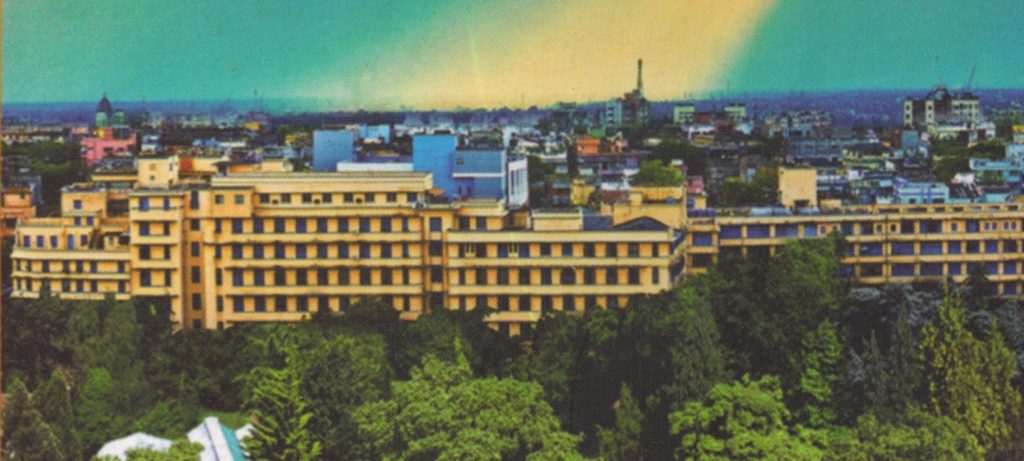
Click on the picture above to see all the pictures with captions
EDUCATION, KOLKATA
In 1917, a spiritual brotherhood of monks and selfless workers lead by Swami Pranavanandaji Maharaj founded an organization in the name of Bharat Sevashram Sangha. It is a philanthropic and charitable organization primarily focused on helping people in times of flood, famine, and disastrous conditions. It also offers financial help and guidance to institutions involved in education for economically depressed children at minimum or no cost to them. Almost 82,255 students in school and 7,083 students in hostels received help from their program Bharat Sevashram Sangha annual report 2020-2021).
NATURAL DISASTER AND PANDEMIC DISEASE
The southern part of West Bengal lies in the delta region of the Bay of Bengal. During monsoons, frequent cyclones and salt-water flooding cause extreme hardship to people looking for food, drinking water, and medicine. The problem multiplies when the Covid-19 pandemic restricts the movement of social volunteers who are willing to help. In this desperation, however, IKP Foundation-supported organizations went deep into the villages and offered people the essential materials to support their living.
IKP Foundation support: During the period of disaster and pandemic (2020-2022) the foundation offered financial support to voluntary organizations to distribute food and essential materials to more than 500 families living in interior villages.
Click here to go to this project
ATGHARA AFTER DISASTER
Click on the picture above to see all pictures with captions
MOUSUNI AFTER NATURAL DISASTERS & PANDEMIC
Click on the picture above to see all pictures with captions













